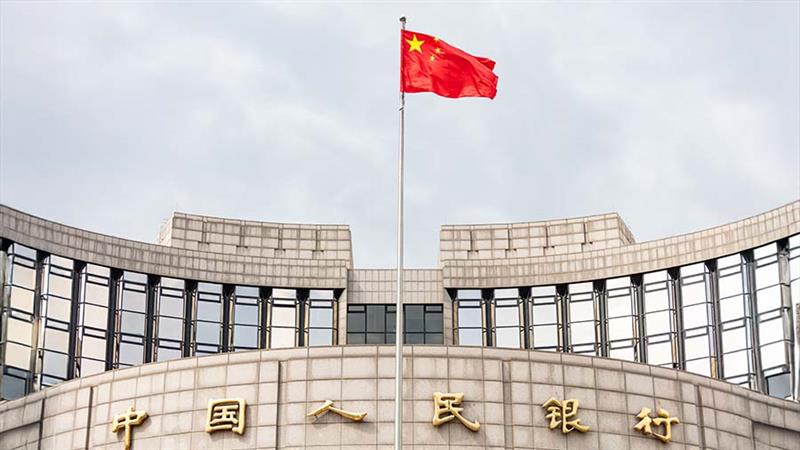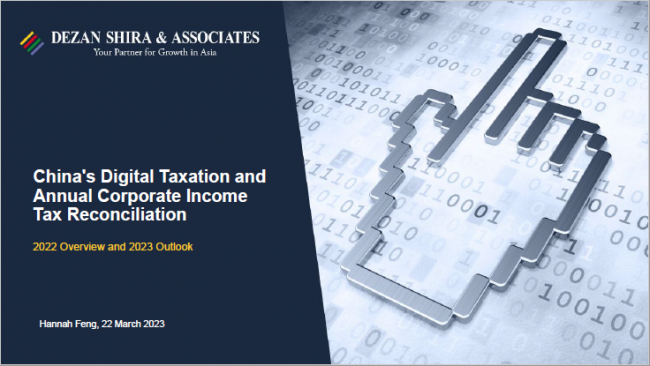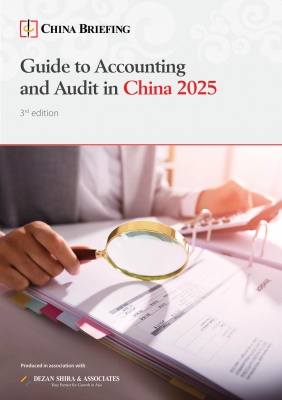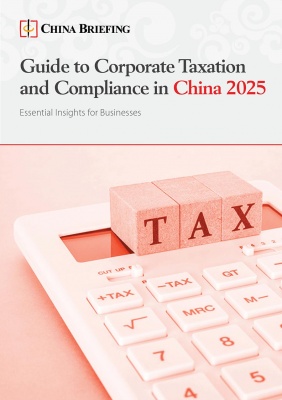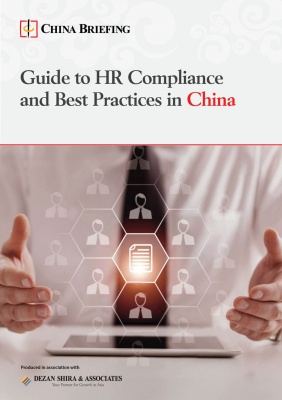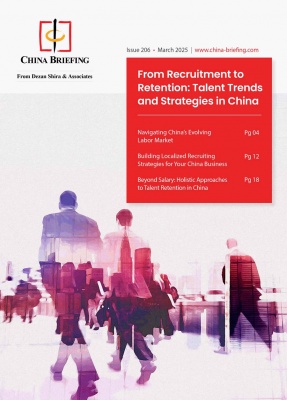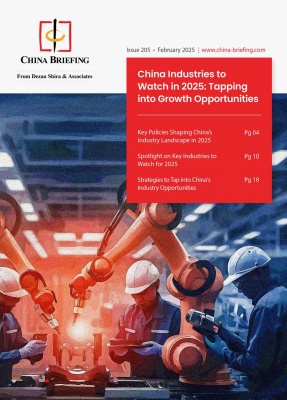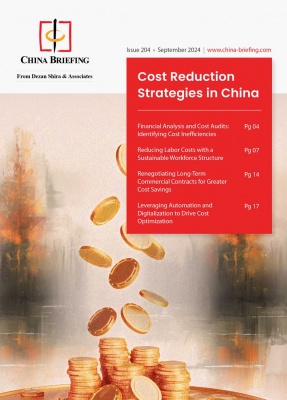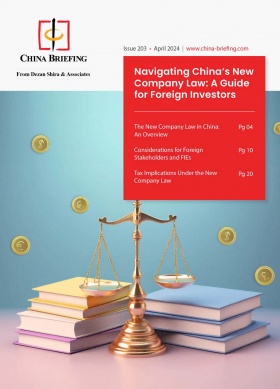23 Matters That Can be Customized in a Company’s Articles of Association (Part I)
The Articles of Association (“AOA”) is the cornerstone document of a company, which sets out critical matters such as the company’s name, registered address, business scope, management system, and other foundational elements. As a written instrument, the AOA defines the basic rules for the company’s organization and operations, serving as a key reference for its governance.
According to the Company Law of the People’s Republic of China (“Company Law”):
A company shall formulate its articles of association pursuant to the law when it is established, which shall be binding on the company, shareholders, directors, supervisors and senior executives.
The AOA represents the collective intention of all shareholders, laying out the fundamental principles for the company’s structure and activities. For this reason, the AOA is often referred to as the “constitution” of the company. It plays a vital role in ensuring the company’s smooth operation, standardizing corporate governance, preventing deadlocks, and safeguarding shareholders’ rights.
In modern corporate law, company autonomy is a core principle, granting shareholders the right to decide on various matters through the AOA. As companies evolve in complexity—encompassing diverse shareholder compositions, governance structures, and personnel—leveraging the legal framework to define key matters in the AOA becomes essential. This allows shareholders to shape governance arrangements that align with their specific objectives.
In this article, we introduce 23 matters that can be freely agreed upon in a company’s AOA in China.
Given the breadth and importance of the topics covered, we will divide this article into three parts for clarity and ease of understanding. Each part will focus on a specific set of matters that can be freely agreed upon in a company’s Articles of Association. This structure will allow readers to delve deeper into the details, ensuring a comprehensive grasp of how to leverage the AOA for effective governance and operational autonomy.
Legal representative
Legal provision
Article 10 of the Company Law provides that the company’s legal representative shall be the director who executes the company’s business on behalf of the company or manager as specified in the AOA. According to the Regulations on Market Subject Registration Administration of the People’s Republic of China, a company’s legal representative shall be registered with the competent Administration of the Market Regulation (“AMR”).
Legal analysis
A legal representative is the principal person who exercises civil rights and fulfills civil obligations on behalf of a company according to the law. This individual can directly and naturally represent the company in all activities. The legal representative is theoretically a nominal position –the governance power of a company is held by the director(s) or the manager within the company’s governance structure. However, since the legal representative legally represents the company, the company is held accountable for their actions.
In cases where the company is liable, the legal representative may bear personal responsibility. This could include being blacklisted for overdue payments or facing administrative or criminal liability in incidents related to food safety, production safety, and similar issues.
Practical suggestion
When selecting a legal representative, a comprehensive approach should be taken. Considering the board of directors is responsible for managing a company’s internal affairs and making business decisions externally, the competition for seats on the board is often the focus of shareholder negotiations if the company has two or more shareholders. For most companies, it may be appropriate for the chairman or the executive director (if there is no board of directors) to be the legal representative.
However, in specialized industries or companies with safety risks, the general manager, often an externally hired professional, might be designated as the legal representative, as they need to be trusted for their character before taking on the role. Since the individual who is appointed as the legal representative is not required to be of Chinese nationality nor required to reside in China, a foreigner could be appointed as the legal representative in a company.
External investment and guarantees
Legal provision
Article 15 of the Company Law stipulates that decisions on external investments or guarantees must be made by the board of directors or the shareholders’ meeting as specified in the company’s AOA. If the AOA sets limits on the total or individual amounts of the investments or guarantees, the amounts must not exceed the specified limits.
Legal analysis
The AOA may specify whether the board of directors or the shareholders’ meeting shall decide on external investments or guarantees, as well as the limits on the total or individual amounts of such external investments or guarantees. To be noted, however, this provision applies only to external guarantees.
If the company provides guarantees for its shareholders or actual controllers (i.e., internal guarantee), a resolution from the shareholders’ meeting or general meeting is required by law, and such internal guarantees cannot be arbitrarily decided in the AOA.
Practical suggestion
Considering that the investments or guarantees may impact shareholders’ interests, it is more prudent for the shareholders to make these decisions, either through the shareholders’ meeting or general meeting. However, if shareholders are too many and dispersed or the board members essentially represent the shareholders, the board may be authorized to make such decisions, as the procedures to convene a board meeting are simpler than convening a shareholders’ meeting. To control risk, it is advisable to set limits on the total or individual amount of investments or guarantees.
Registered capital and contributions
Legal provision
According to Article 46 of the Company Law, the AOA of a limited liability company must specify the company’s registered capital, the method of contribution, the amount of each shareholder’s contribution, and the timing of those contributions.
Article 49 of the Company Law stipulates that shareholders must pay their subscribed capital contributions on time and in full. If a shareholder contributes in cash, the full amount must be deposited into the company’s bank account; if the contribution is in non-monetary assets, the appropriate ownership transfer procedures must be followed. If a shareholder fails to make the required contribution, they must pay the full amount to the company and shall also be liable for compensation for losses caused to the company.
Legal analysis
China follows a subscribed capital model, which means that the capital contributions do not need to be paid upfront. Under the current Company Law, shareholders of a Limited Liability Company (LLC) must pay their subscribed capital in full within five years of the company’s establishment. However, shareholders can agree on the subscribed capital and time of payment by themselves within this timeframe, and such information shall be specified in the AOA.
Practical suggestion
The AoA must clearly state the amount of registered capital, the amount of each shareholder’s subscribed capital (including the value of any non-monetary contributions such as property, intellectual property, or land use rights), and the timing of contributions. Shareholders should determine the capital and timing based on their situation and the company’s development plans. If a contribution deadline is approaching but a shareholder feels it needs to be extended, this can be adjusted by modifying the AOA and going through the capital reduction processes.
A shareholder who fails to fulfill the obligation to pay in capital contribution on time shall be liable for compensation for the losses caused to the Company by his failure to contribute the capital on time. It is advisable to specify the compensation calculation method and how this liability will be handled in the AOA.
Liability for insufficient contributions
Legal provision
Article 50 of the Company Law stipulates that at the time of the establishment of a limited liability company, if a shareholder fails to pay the capital contribution by the provisions of the AOA, or the actual value of the non-monetary property contributed is significantly lower than the amount of capital contribution subscribed, the other shareholders at the time of establishment and the defaulting shareholder shall bear joint and several liability within the scope of insufficient capital contribution.
Legal analysis
Current law does not require an evaluation of non-monetary assets at the time of contribution, but this does not mean shareholders can arbitrarily price a value to their non-monetary contributions. Other shareholders shall insist on valuing the non-monetary assets at market value to avoid unnecessary risks in the future.
Practical suggestion
The AOA should clearly state the value of non-monetary assets being contributed and specify the deadline by which the shareholder must make up for any shortfall if the actual value is determined to be lower than the agreed amount. It is also important to include breach of contract penalties for failing to make up for the shortfall, to avoid other shareholders being unfairly burdened with joint liability.
Agreement on dividends
Legal provision
Article 210 of the Company Law stipulates that shareholders shall receive dividends in proportion to their paid-in contributions unless all shareholders agree otherwise.
Legal analysis
The basic principle of the Company Law is that shareholders have equal rights, but in practice, the contributions of shareholders to the company are not always proportional to their shareholding. Therefore, Company Law allows shareholders to modify the dividend distribution rules according to their agreement, with no restrictions on the modified distribution ratio and methods, as long as the shareholders agree.
Practical suggestion
Major shareholders often seek to keep control of the company by holding a majority of the shares. To motivate or balance the interests of other shareholders, it might be helpful to allow other shareholders to receive a higher dividend. If dividends are distributed in a way other than based on the shareholding ratio, it is important to clearly define the distribution ratios.
Shareholders’ meeting
Legal provision
Article 62 of the Company Law states that shareholder meetings include regular meetings and special meetings. Regular meetings should be held as specified in the AOA.
Legal analysis
The AOA can specify the dates for the regular meetings. In cases where there are disputes among shareholders, it is often difficult for even the controlling shareholder to convene a special meeting, which could lead to company deadlocks. Since at least one shareholders’ meeting per year is necessary to make sure the company may operate smoothly, it is necessary to specify in the AOA the time and locations for regular meetings to ensure the meeting can be held smoothly.
Practical suggestion
To make the company’s important matters can be resolved timely and to ensure the company’s smooth operations, it is advisable to clearly specify in the AOA that at least two regular meetings shall be held each year with one meeting scheduled in the middle of the year and another at the end of the year, and the dates and locations of such meetings.
Notice of shareholders’ meeting
Legal provisions
Article 64 of the Company Law stipulates that a notice of the shareholders’ meeting shall be given to all shareholders at least 15 days before the meeting is held unless otherwise stipulated in the AOA or agreed upon by all shareholders.
Legal analysis
In the course of the company’s operation, it is necessary to make resolutions on certain important matters through the shareholders’ meeting. For this purpose, the Company Law stipulates eight functions and powers that must be exercised by the shareholders’ meeting.
All shareholders must be notified before the meeting is held. Such notice must be delivered to each shareholder 15 days before the meeting. If the notice is not delivered or the period from the date of receipt of the notice by the shareholder to the date of the meeting is less than 15 days, the resolution passed on the shareholder meeting may be revoked by the court.
Practical suggestion
In order to ensure the timely convening of the shareholders’ meeting and the validity of the resolutions of the shareholders’ meeting, it is suggested to specify the time requirements and notification methods of the shareholders’ meeting notice in the AOA.
A notice period of 10 or seven days before the meeting is recommended, and the notification method can include written notices, emails, or text messages. This improves efficiency and helps prevent situations where certain shareholders may “disappear” and evade notice, especially in the case of disputes.
About Us
China Briefing is one of five regional Asia Briefing publications, supported by Dezan Shira & Associates. For a complimentary subscription to China Briefing’s content products, please click here.
Dezan Shira & Associates assists foreign investors into China and has done so since 1992 through offices in Beijing, Tianjin, Dalian, Qingdao, Shanghai, Hangzhou, Ningbo, Suzhou, Guangzhou, Haikou, Zhongshan, Shenzhen, and Hong Kong. We also have offices in Vietnam, Indonesia, Singapore, United States, Germany, Italy, India, and Dubai (UAE) and partner firms assisting foreign investors in The Philippines, Malaysia, Thailand, Bangladesh, and Australia. For assistance in China, please contact the firm at china@dezshira.com or visit our website at www.dezshira.com.
- Previous Article China’s Supply Chain Transformation: Technological Innovations and Future Outlook
- Next Article 23 Matters That Can be Customized in a Company’s Articles of Association (Part II)

